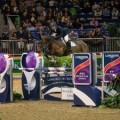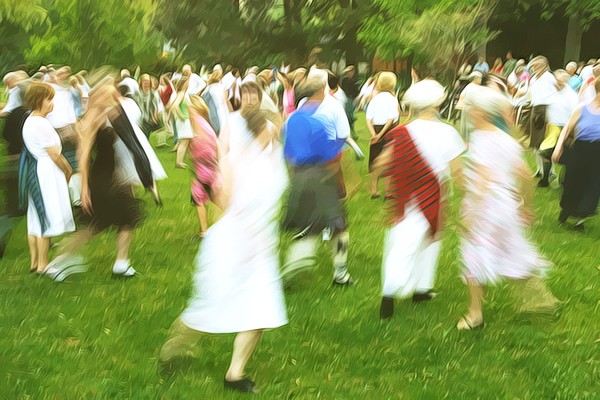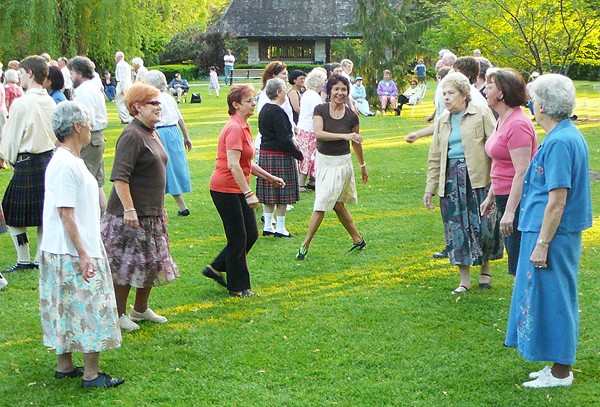Think of  returning to high school or a home city you have moved away from 5 or 10 years ago and that was the feeling of my first visit to the ROM-Royal Ontario Museum in in almost a decade. Well five years ago I visited the ROM just about every day through Summer and Fall but that was on the outside walking down the treelined walkway between  ROM and UofT’s  Royal Conservatory of Music. So I definitely got a feeling for the texture and mood of  both “museums” during wet and cool days as well as steamy hot summer nights.
But both buildings were under major renovation during my hiatus and then work took me away from town. Okay,  the constant increases in admission prices at what once had been a paradise of free be-wonderment  may have  also influenced my decision to bypass  ROM-ing with wide eyed awe or just enjoying a read in the Rotunda under the watchful eyes of the Haida Totem Poles. But the East Asian Dance Group with a free dance concert at the ROM changed my forced abstention. I decided to Return to the ROM while taking in the East Asian Dance company.
So upon my return to the ROM I first went to an old recluse full of fond memories – yes, the ROM Minerals Room:

The honest to goodness truth in so many shapes and forms
From early youth and finding geodes down at Indian Rock, discovering  gems and minerals has always  been a great delight. But then to learn that the chemistry behind the formation and structure of various crystals revealed a natural path to beauty  that even in its most riotous colors and strange orderings had an underlying set of logics. Even more fascinating was the range  of  conditions that could take the  same basic ingredients yet spawn a riot of  different  crystalline forms – suddenly the almost intimidating diversity of the the natural world had rhyme and reason. Crystalline complexity became at least reasonable even if almost infinitely unpredictable. Beside this all,  I loved the reflections, juxtaposition and various color sparkles.

Curve of  Giant Geode with Amethyst Inner Crystals
The  ROM collection had several geodes on display. There is also an explanation of the formation of geodes. Molten origins occur when a bubble of gas  does not escape from a lava layer and the differential cooling causes separation and crystal formation. Or rounded cavities in sedimentary formations shapes the basic geode. After rock around the cavity hardens, dissolved silicates and/or carbonates are deposited on the inside surface. Over time, this slow feed of mineral constituents from groundwater or hydrothermal solutions allows crystals to form inside the hollow chamber.  Many geodes are cut and polished for their inherent beauty. But of even greater interest was the fact that two radically different methods could produce the same geode results.

Blasts of Twisting Basalt
But geodes are not the only mineral formations of interest – these swirls of snarling rock echoed  my feelings almost like a set of confused emotions. I smiled to think that geology knew and depicted  my innermost emotions.

like a Jade Ship’s Bow slicing through the rockscape
Soon I began to look at the exhibits in a new fashion – seeing new stylings, cause and effects. Instead of raw crystalline facts I was seeing metamorphic shapings and metaphors. And at this moment I knew I was both back and yet seeing ROM anew as if for the very first time. For more ROM Minerals section pictures, Â go here.




